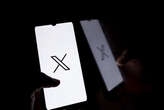How much should we be tipping? Legendary restaurateur Danny Meyer dives into the relationship between servers and customers. The founder of Union Square Hospitality Group and Shake Shack shares his hard-earned lessons from unsuccessfully challenging the tipping norm, how to honor the work of cooks, and the pressure a customer faces when given a screen for leaving a tip.
This is an abridged transcript of an interview from Rapid Response, hosted by Bob Safian, a former editor-in-chief of Fast Company. From the team behind the Masters of Scale podcast, Rapid Response features candid conversations with today’s top business leaders navigating real-time challenges. Subscribe to Rapid Response wherever you get your podcasts to ensure you never miss an episode.
We’ve seen a lot of headlines on tipping fatigue and guilt tipping. And you have been, at times, sort of a lightning rod about the culture of tipping. At one point pre-pandemic, you stopped tipping in your restaurants. How hot is the tipping discussion today in the industry for your customers, for your staff, for your peers?
I think that tipping is almost more of an interesting issue to talk about externally than it is internally. I think that, in general, restaurant professionals are okay with the system as it is. I’ve learned that the hard way by eliminating tipping for six years and realizing that very, very few other restaurateurs wanted to join us.
It’s a very difficult thing to do. It’s deeply embedded in American culture to tip when you go to restaurants. Uniquely American, I would say, and this has been the case really for 160 years or so when tipping first started happening in restaurants and train cars as a way to not pay any actual salary to porters in trains or waiters, who were largely African American back then.
And the thinking was that it’s not slavery because we’re going to get our patrons to pay a tip instead of us paying them a salary. Well, that’s kind of an amazing economic boon for an entire industry if you think about it. It’s almost as if you paid for all the manufacturing and none of the sales and merchandising, which is what waiters do.
Meanwhile, the restaurant and the restaurant profession have gotten away with actually having synthetic pricing on their menus because we’re not really charging you for everything.
We’re just charging you for part of it, and then you’re going to pay for the balance. So it hasn’t worked in a lot of different ways. Probably historically the biggest way it has not worked is that in many, if not most, states in the country, including our state, New York, tips may not be shared between waiters and cooks.
Legally, they’re not allowed to.
Legally they’re not allowed to, and if they do, the restaurant is on the hook and can be liable for all kinds of damages, which can be really, really huge.
I remember when you banned tipping, part of it was to try to even out that front-of-house, back-of-house sort of tension, right?
That’s exactly right. You guys talk about inflation all the time; you’ve seen it in the restaurant business.
And what does that mean? That means that waiters—I’m happy for waiters—are essentially making more money than they’ve ever made by waiting tables. But cooks, who may not legally accept tips—the disparity between the two has only grown.
You may say, “Why don’t you just pay your cooks more money?” And we have, and we do. As a matter of fact, when we reinstituted tipping, not only did we raise the compensation for our cooks, but we also pay our cooks a percentage of sales every single day, so that they too can make more money.
But I don’t think we should have to do that. I think it should be legal for tips to be shared. You see a growing disparity between what people in the dining room can earn and what people who cook your food can earn.
And it’s not fair. Like if it were a football team, it wouldn’t be fair to pay your offense 60% more than you pay your defense. I don’t think halftime would be a pleasant place to be.
I saw somewhere that you said that you don’t think a tip is needed for a cup of coffee or fast-casual takeout like Shake Shack and Daily Provisions, which are two of your businesses. Does that create any tension for you in this?
Well, what I said was taken out of context. What I said was, I don’t think a tip should ever be mandatory. I think that, as a customer, a paying customer, you should leave a tip if you feel like that person truly added value to your experience. When you’re sitting down in a restaurant for a one-and-a-half or two-hour meal or sometimes more, you actually have an opportunity to develop a rapport with your server and vice versa.
And I think that the server has an opportunity to do really thoughtful things for you. And I think for most people, it’s not only expected to leave a tip in that situation, but it’s actually a pleasure. The word “gratuity” is connected to gratitude. And I think it’s a pleasure to express gratitude.
If you have a very quick experience, it’s harder to have developed a relationship where you feel like that person made your day.
I think the challenge has been that for fast-casual restaurants or quick-serve restaurants, I would call them, their margins have also been compressed dramatically.
They can’t keep raising the hourly rate over and over and over without raising their menu prices to the point that people go, “You’ve got to be kidding me.” So with technology, since so many of these places now have a little touchpad, which is how you pay, you use your Apple Pay or whatever it is, or your credit card, swipe it, and it’s really easy to flip that screen around for that to be the tech version of the tip jar. And back when it was a tip jar, it had a small amount of confusion attached to it.
I didn’t really want to put change in there or extra dollars in there. I would if the person did something thoughtful for me, but it was kind of easier to do it when you felt like it was warranted. And it was also easier to not do it because it wasn’t a screen stuffed in your face that you knew the cashier was going to flip back around and see what you did afterwards.
I think it has, in fact, caused a certain amount of discomfort for patrons.
What I would like is instead of having the choice of 5%, 10%, 20%, or the fourth button, which feels like, “You’re a schmuck for leaving nothing”—I mean, that’s invisible, but that’s kind of how it feels—I think it would be amazing if there were actual behaviors connected to those numbers. So, for example, 20% would be, “You actually made my day,” and 5% would be “You accurately fulfilled the order,” and 0% might be, “You didn’t smile at me once. I was just another transaction along the way.” But I feel like there should be some words that are attached to behaviors.
So as a customer, you would have some understanding about why or what I’m giving for my tip, as opposed to just feeling a little bit pressured into it.
What that would do—hopefully—as a manager or leader, it would give me the opportunity to encourage even better hospitality from my team because I would be able to collect all the data.
And I could actually see who and when we are delivering the most happiness because that is the thing that restaurants and restaurant patrons have in common. We want you to leave a little happier than however you felt when you came in.
And if we’re doing nothing to add to that other than taking your money, I guess we made you happier if the product is really good. But what if we made you emotionally feel better while you were doing it?
I don’t think it would be an awful system if it actually correlated to real behaviors that then, as a leader, I could say we’re trending either the right way or the wrong way. But really think about this because we’re in the business of making people feel better.









No comments